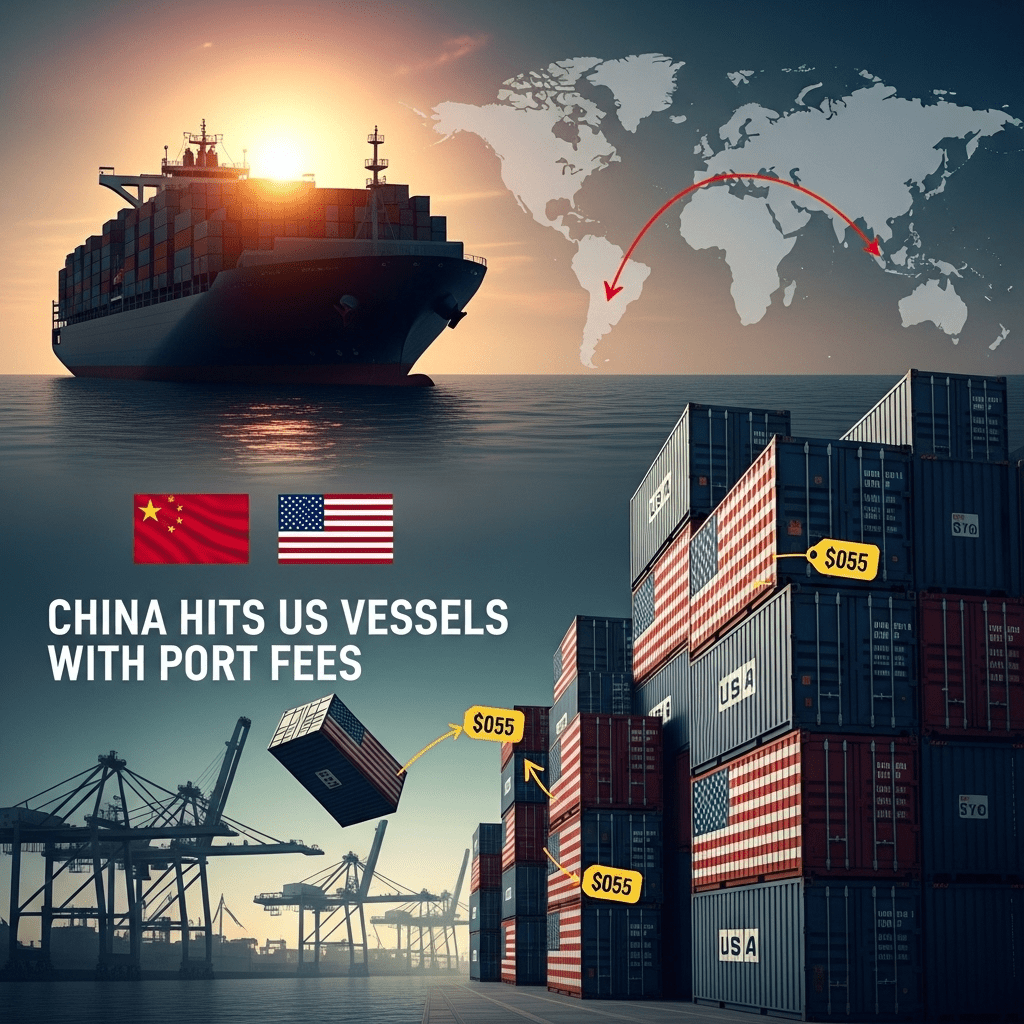In a significant development affecting global trade relations, China hits US vessels with retaliatory port fees in response to recent U.S. tariffs. This move represents a new phase in the ongoing economic standoff between Beijing and Washington, raising concerns among investors, shipping companies, and policymakers about the future of bilateral trade and its impact on the global economy.
How China Hits US Vessels With Retaliatory Port Fees Alters Trade Routes
The decision that China hits US vessels with retaliatory port fees is set to transform longstanding shipping dynamics. These fees, reportedly ranging from 10% to 25% above standard port charges, will increase operational costs for American shipping lines. The measure comes as a direct response to recent U.S. tariff hikes on Chinese goods, further escalating the trade dispute between the two economic superpowers. Notably, U.S. exports of agricultural products, machinery, and consumer goods are likely to face new pricing pressures as a direct result of these increased costs.
Industry experts warn that these additional port fees could prompt shipping companies to reroute vessels, avoid Chinese ports altogether, or pass added expenses onto end consumers. The repercussions extend beyond bilateral trade – global supply chains may see significant delays and cost fluctuations as a result. Stakeholders should monitor shifts in logistics strategies and seek diversified market access in this swiftly changing landscape.
Background: The Escalating US-China Trade Tensions
The imposition of retaliatory port fees is the latest step in a series of escalating measures between the U.S. and China. Since late 2024, following the introduction of new U.S. tariffs on technology and manufacturing imports, China has sought comparative leverage. Beijing’s Ministry of Transport stated that these fees aim to “maintain fair competition and protect national interests.” However, analysts suggest that this could lead to a tit-for-tat cycle affecting not only tariffs but also non-tariff barriers, increasing uncertainty for multinational companies and global investors.
Economic Implications When China Hits US Vessels With Retaliatory Port Fees
The immediate impact on U.S. shipping companies could be substantial. Increased costs may erode profit margins for major carriers, especially those specializing in trans-Pacific routes. For exporters, the added fees could make U.S. products less competitive in the Chinese market due to higher landed costs. Smaller businesses may struggle to absorb these expenses, potentially prompting reconsideration of trade volumes or sourcing strategies.
Additionally, the broader ramifications could include increased freight rates, delays at ports, and bottlenecks in global supply chains. Given that China remains a crucial node in international shipping networks, disruptions are likely to reverberate through industries ranging from electronics to apparel. Investors focused on global market trends should pay close attention to quarterly earnings reports from major shipping lines and associated logistics providers for insights into evolving risk exposure.
Possible Responses and Long-Term Strategies
In response to China hitting US vessels with retaliatory port fees, stakeholders are exploring mitigation and adaptation strategies. Shipping companies may seek alternative routes, such as Southeast Asian transshipment ports, or negotiate volume deals to offset added costs. Some U.S.-based companies are accelerating diversification efforts, both in sourcing and destination countries, to reduce dependence on China-centric supply chains.
The U.S. government is also reportedly considering diplomatic channels to de-escalate the situation, emphasizing the need for stable trade relations. However, with protectionist sentiment rising in both countries ahead of impending elections, a quick resolution seems unlikely. Those seeking a deeper understanding of macroeconomic factors at play may benefit from up-to-date investment insights offered by industry analysts and policy experts.
Looking Ahead: The Global Economic Landscape
As China hits US vessels with retaliatory port fees for 2025, the move underscores the fragility of current trade relations. Markets have responded with increased volatility, particularly in shipping, manufacturing, and agricultural sectors. Exporters and importers alike are reevaluating risk exposure and contingency plans to navigate a climate of geopolitical uncertainty.
Long-term, these port fees could incentivize the search for new trade partners and spur innovations in logistics efficiency. Yet, the immediate effect remains heightened costs, disruption to established shipping patterns, and closer scrutiny by financial and governmental bodies worldwide. For investors and global business leaders, staying informed on policy changes and potential retaliatory measures will be crucial in adapting to a rapidly evolving trade environment.
